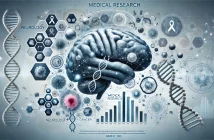Effective science communication refers to the process of effectively relaying the facts and findings from scientific studies to other scientists and non-experts in general. This process of dissemination of facts from current research and findings helps people understand its broader implications for the society. Public awareness, in turn, helps taking informed decisions. The effectiveness of science communication can affect the science policy-related legislation and monetary budget allocations from funding agencies for further scientific research and advancement. The definition of science communication may seem straightforward; however, current practices of effective science communication is far from perfect.
The birth and spread of false information
In this age, a vast amount of information is at everyone’s fingertips–through blogs, Facebook posts and Instagram photos–to learn and propagate further. While each media platform offers unique ways to share science there is a downside of prevalent misleading or false information. Science journalism plays a key role as the pipeline for transmission of scientific information to the public. A lot of times, media and journalists may oversimplify the scientific information to make it suited for lay audiences. A popular practice known as “infotainment”, focuses on describing new scientific discoveries in an entertaining fashion. Frequently, to “sensationalize” the scientific evidence, journalists may end up generalizing the facts to the point of being overreaching or worse–even blatantly wrong. Unfortunately it is these sensational headlines which lend themselves beautifully to being wildly circulated on social media and Whatsapp. A study in Science found that fake news was 70% more likely to be retweeted than true ones.
A good example of false news in science is the Planet X conspiracy — that a planetary system ‘Nibiru’ is going to collide with the Earth and cause the end of the world in the early 21st century. Although this apocalyptic theory has been widely debunked and rejected by scientists/astronomers worldwide including the NASA, it is still being periodically circulated on the Internet. Many such hoaxes never completely disappear; they resurface from time to time.
There’s the other issues of science journalists chasing a definitive headline, which means that they often report findings from a single study or even mis-report inconclusive studies. Sometimes, there’s a disconnect between the headline and article itself, and the lines between a strong headline and clickbait are getting increasingly blurry. A recent headline in the New Scientist read, “Cause of polycystic ovary syndrome discovered at last”. However, the article reported that a study carried out on mice suggested that PCOS may be caused by a hormonal imbalance before birth.
— New Scientist (@newscientist) May 15, 2018
How to prevent misleading information
When scientists become effective science communicators themselves, science thrives. However, scientists generally come across as snobbish for using specific jargon laden complex terminologies while describing their science. Every field has a unique vocabulary. While peers in the same field can understand each other, it poses a serious obstacle to communicate beyond this sphere. One of the major underlying reasons for this behavior is the large divide in what scientists assume the public knows and what the public knows. Effective communication helps set the record straight for a better understanding of science’s impact on everyday lives of individuals and communities. Ultimately, public awareness encourages more informed decision making from the government as well.
One of the problems is that scientists in the STEM (Science, Technology, Engineering and Mathematics) fields do not get any formal training on communicating science effectively. From undergraduate to graduate student to postdoc and even beyond, scientists live in a knowledge bubble comprising of their peers, who speak the same complex lingo. Communicating to a general audience is a whole other ball game.
How scientists can participate in effective science communication
So, how can scientists become effective communicators?
Tell a story: First and foremost, to develop a completely new communication skill set, scientists must pay close attention to the language they use and practice. People like listening to stories. The art of storytelling has the ability to unify science and humanities. Some scientists who excel at this, such as Olivia Ambrogio, Mitchell Waldrop, and Megan Watzke, are great examples to follow. Reading examples of good science communication will help develop one’s own communication style.
Participate in informal science outreach: Engaging in a narrative with broader strokes is more effective to get people “hooked” to learn more. Scientists must try to elaborate on what inspired them in the first place to this field of work; how would these findings help solve a current problem in the world. During their scientific training, the aspiring scientists should be exposed to opportunities that involve informal science outreach, for a synergistic growth. In fact, integrating science communication sans jargon as a part of the curriculum at their respective home institutions can go a long way in bridging the divide between them and lay public.
Zoom out: Scientists need to realize that this interaction with non-experts has immense benefits for them also. As researchers, we tend to explain things from our own perspective and understanding. Majority of times, scientists get overtly immersed in the minute specifics and details. Because of the vast knowledge, it can be really challenging for a scientist to take a few steps back and provide the bird’s eye view of the problem at hand. Conversely, to explain the specific scientific details to a lay audience, the scientists must use simple and succinct ways. This practice encourages them to think broadly of the big picture. It gives them an opportunity to reflect on the importance of their research and what implications it holds for the world, beyond satiating their own scientific curiosity.
Science information should not be contained within an elitist club. Science can be, and in fact, must be accessible to everyone in an understandable format. Yes, science communication can be a rough and time-consuming terrain for naive and inexperienced scientists embarking on this road. But, backed by the right kind of training and resources, these novices can progressively develop coherent and effective science communication strategies that will help bridge the gap between scientist, journalist and public.







